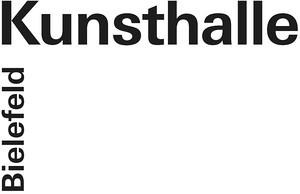Modernist Women in Germany
October 31, 2015–February 28, 2016
Artur-Ladebeck-Straße 5
33602 Bielefeld
Germany
Hours: Tuesday–Sunday 11am–6pm,
Wednesday 11am–9pm,
Saturday 10am–6pm
T +49 521 329995017
info@kunsthalle-bielefeld.de
Under the title Empathy and Abstraction. Modernist Women in Germany, the Kunsthalle Bielefeld is presenting works by women artists from the late 19th century through the 1930s, along with selected contemporary positions. The exhibition shows how much women have contributed to the development of art in Germany over the past 120 years, with a look at the yet-to-be-discovered story of women’s role in art history.
Unlike male artists who were obviously allowed to study at academies, the path of a talented female artist around 1900 began with a fight for the right to be an independent artist, for opportunities to study and practice art. While society naturally acknowledged and paid respect to even the most modest “genius” of male artists, women artists had to struggle against ignorance, a lack of understanding, social rejection, and familial duties in order to achieve professional status.
Despite all of the obstacles, the list of female artists who showed the way to modernism in Germany is long. It contains famous names, from Käthe Kollwitz and Paula Modersohn-Becker to Gabriele Münter and Ida Kerkovius, Hannah Höch and Meret Oppenheim, among many others. Today, they represent German modernism as naturally as their male colleagues do. Even longer, however, is the list of their comrades whose names are hardly known today, whose works have been more or less forgotten, have vanished, or have been destroyed. Besides those named above, the exhibition therefore also features selected lesser-known artists such as Dorothea Maetzel-Johannsen, Dodo (Dörte Clara Wolff), and Maria Caspar-Filser, thus showing how much still awaits discovery in the field of classic modernism.
After 1945 and up until the end of the 20th century, painting was of secondary importance to female artists in (West) Germany, behind video and performance art, installations, and objects. From the 1960s onward it was said that painting had come to an end, and in the 1970s it was not the right medium for confronting the male-dominated art world. Video, photography, and film—not painting—were the media women artists used to question existing social structures and gender roles. Representing the “exception from the (female) exception” up until the 1990s, the second part of the show will feature paintings by Meret Oppenheim, Maria Lassnig, Christa Näher, Leiko Ikemura, Karin Kneffel, and Sophie von Hellermann, who, like their classic modern predecessors, were often long ignored or forgotten, although they continued to pursue their profession during the anti-painting art context of their time, and still pursue it to this day, having come to represent important positions in painting in contemporary Germany.
Artists:
Ella Bergmann-Michel (1895–1971), Maria Caspar-Filser (1878–1968), Dodo (Dörte Clara Wolff) (1907–98), Helene Funke (1869–1927), Ida Gerhardi (1862–1927), Lilly Hildebrandt (1887–1974), Dora Hitz (1856–1924), Hannah Höch (1889–1978), Leiko Ikemura (*1957), Ida Kerkovius (1879–1970), Karin Kneffel (*1957), Käthe Kollwitz (1867–1945), Frieda Kretschmann-Winckelmann (1870–1933), Maria Lassnig (1919–2014), Elfriede Lohse-Wächtler (1899–1940), Jeanne Mammen (1890–1976), Dorothea Maetzel-Johannsen (1886–1930), Paula Modersohn-Becker (1876–1907), Gabriele Münter (1877–1962), Christa Näher (*1947), Meret Oppenheim (1913–85), Anita Rée (1885–1933), Clara Siewert (1862–1944), Maria Slavona (1865–1931), Sophie von Hellermann (*1975), Marie von Malachowski-Nauen (1880–1943), Julie Wolfthorn (1864–1944)
Curators:
Jutta Hülsewig-Johnen, Henrike Mund

